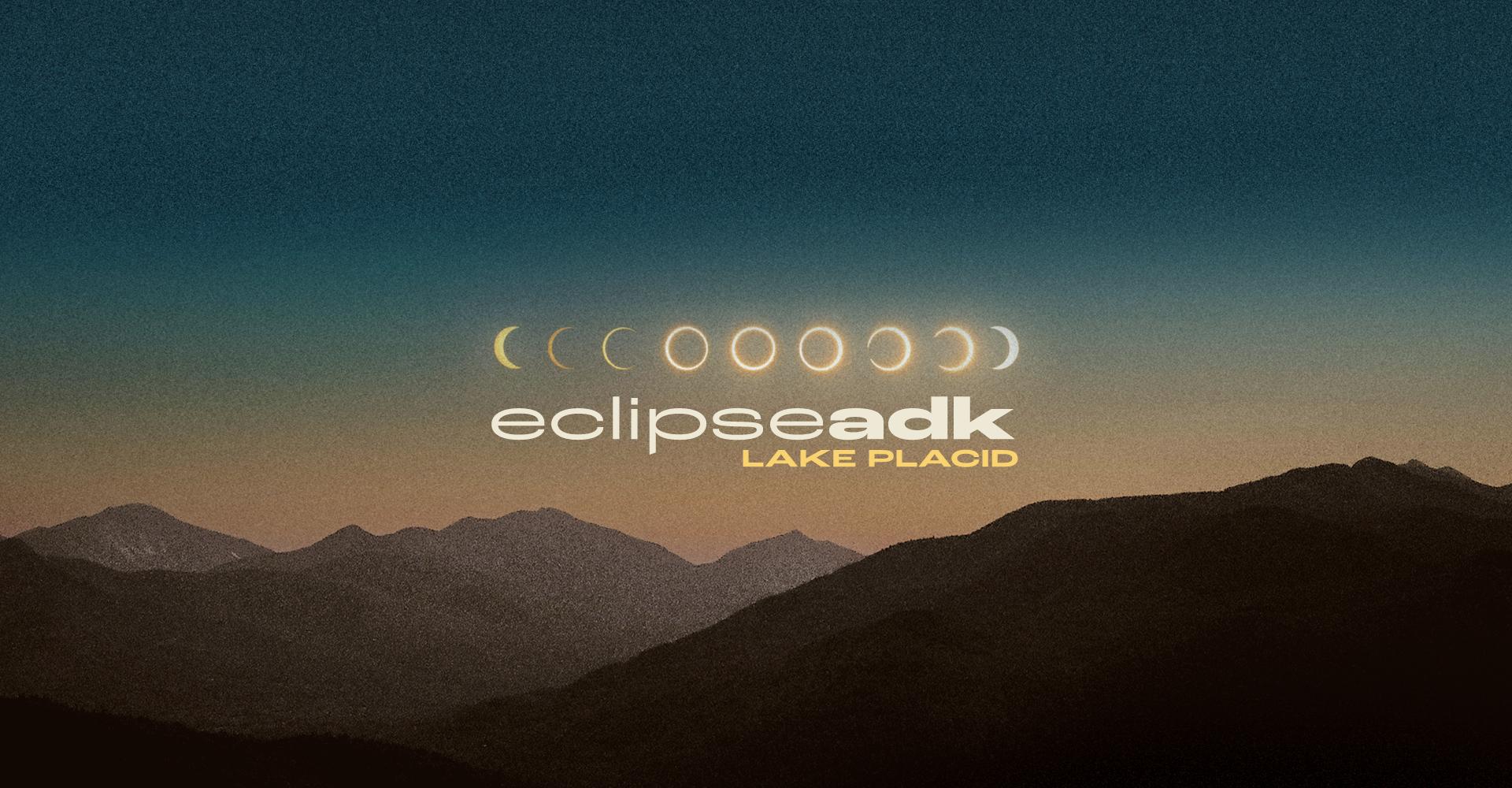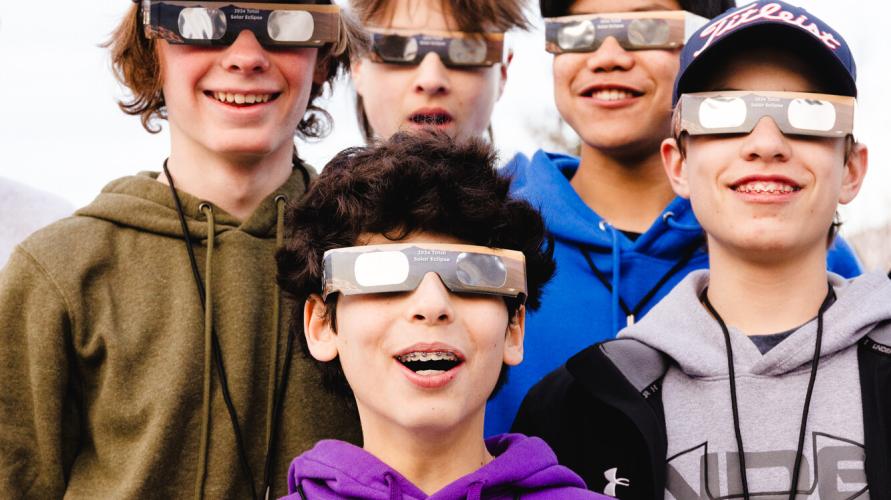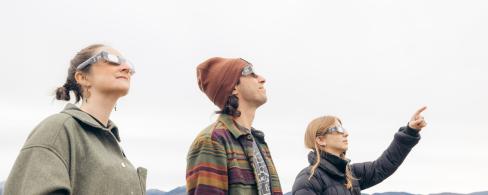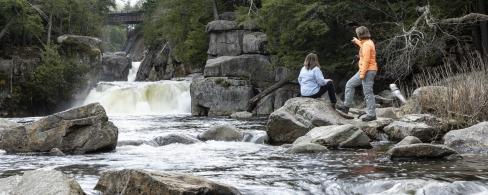Lake Placid is in the path of an extraordinary experience!
On April 8, 2024, Lake Placid — along with the rest of the Adirondacks — will be one of the best locations in the northeast to view an exceptional event, a total solar eclipse. This isn't just an amazing sight, it's also exceptionally rare. Total solar eclipses happen over the same place on earth about once every 400 years! As a historic village filled with Olympic Legacy Sites, situated amongst the Adirondack High Peaks, and filled with events and amenities for all travelers, Lake Placid will provide one of the most unique eclipse viewing experiences in the country.
Eclipse viewing locations in Lake Placid
The Lake Placid events and locations listed, and on the map below, will offer parking, clear, flat scenery, and, in some cases, amenities. Because of the unpredictability of spring weather, it's important — and more fun! — to stick to a safe, easily accessible location. Mountain summits and newly thawed lakes are not ideal or safe for eclipse viewing.
- Join fellow observers at Olympic Legacy Sites! Take part in a special viewing parties at the Olympic Speedskating Oval or the Olympic Jumping Complex. Join in the ultimate après ski at Whiteface Mountain. All events offer eclipse glasses (while supplies last), amazing scenery, music, and more! Viewing will also be available at Mt Van Hoevenberg. If weather puts a damper on outdoor viewing, watch a live feed of the eclipse in the Olympic Center 1980 Herb Brooks Arena.
- The Town of North Elba is making the Lake Placid Horse Show Grounds and the North Elba Athletic Fields available for comfortable, spacious viewing. Please bring your own viewing glasses.
- Seek out a naturally beautiful spot with accessible parking and open spaces, such as John Brown Farm or Cascade Welcome Center.
What time will the eclipse take place in Lake Placid, New York?
The total duration of the April 8, 2024 eclipse will be 2 hours, 23 minutes, and 41 seconds. Maximum totality will last for 3 minutes and 21 seconds.
- Partial eclipse begins at 2:13:02 pm
- Full totality begins at 3:25:07 pm
- Maximum totality at 3:26:48 pm
- Full totality ends at 3:28:29 pm
- Partial eclipse ends at 4:36:43 pm
Get your eclipse glasses
Enjoy viewing the solar eclipse safely with proper eye protection! Solar eclipse glasses are special viewing glasses that allow you to look at the sun directly. While some events will have glasses available on April 8, it's best to come prepared with your own glasses. Glasses for personal use can be picked up in the following locations around the Lake Placid Region:
- The Lake Placid Visitors Bureau — 2608 Main St, Lake Placid
- North Elba Town Hall — 2693 Main St, Lake Placid
- Town of Keene Town Hall — 10892 Route 9N, Keene
Staring at the sun without proper eye protection can lead to the burning of your retina, and cause permanent vision loss. You’ll want to wear these for the entire event until the few minutes when the sun will be entirely blocked.
Solar eclipse helpline
If you have more questions than we've answered here and in the frequently asked questions below, call the solar eclipse helpline at 518-621-3682. This dedicated information line is designed to field whatever inquiries remain. Whether you're a local wondering what to expect or a visitor trying to get close to totality, we're here to help. The helpline will be open from 9 a.m. - 4 p.m., Friday through Monday.
Cell phone usage
The period of totality and for some time afterward will be the peak load for cell towers, as people send and post their eclipse videos and photos.
How to be prepared:
- Bring a printed map or a screenshot of your directions.
- Plan on where to meet friends and family after the eclipse, in case you get separated.
- Keep your phone charged.
Drone usage
In the Adirondack Park, it is legal to launch a drone anywhere the Federal Aviation Administration (FAA) allows, except on specific state lands, and for private use only.
- Drones are motorized equipment and the operation of drones on lands classified as Wilderness, Primitive, or Canoe is absolutely prohibited.
- Commercial drone usage on state Wild Forest lands and over the Adirondack Rail Trail require a permit.
- For more info on the land classification of your viewing site, please visit the DEC website.
For safety reasons, we strongly suggest that you enjoy the eclipse with your eyes, telescopes, and binoculars, with proper protective gear, and leave the drone at home. On April 8, the skies will already be much busier with public and private aircraft.
In Lake Placid, the viewing parties and areas at the Horse Show Grounds, North Elba Athletic Fields, Olympic Speed Skating Oval, and Olympic Jumping Complex are all within a no-fly zone, due to their proximity to the airport.
Eclipse events and updates
Check out the events at the bottom of this page for up-to-date details! As we get closer to the date of the eclipse, more information about special activities, viewing parties, and specials will be announced.









